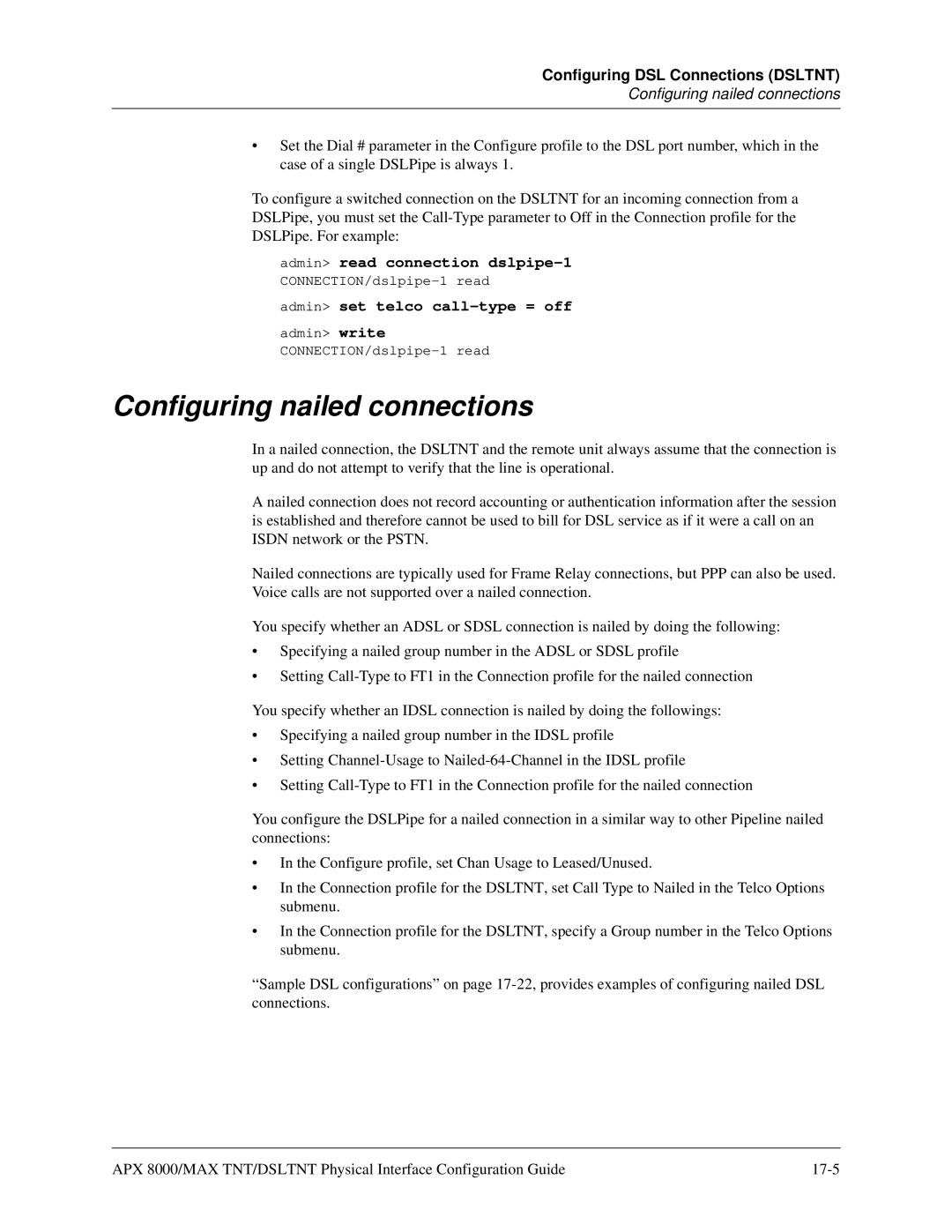
Configuring DSL Connections (DSLTNT)
Configuring nailed connections
•Set the Dial # parameter in the Configure profile to the DSL port number, which in the case of a single DSLPipe is always 1.
To configure a switched connection on the DSLTNT for an incoming connection from a DSLPipe, you must set the
admin> read connection dslpipe-1
admin> set telco call-type = off
admin> write
Configuring nailed connections
In a nailed connection, the DSLTNT and the remote unit always assume that the connection is up and do not attempt to verify that the line is operational.
A nailed connection does not record accounting or authentication information after the session is established and therefore cannot be used to bill for DSL service as if it were a call on an ISDN network or the PSTN.
Nailed connections are typically used for Frame Relay connections, but PPP can also be used. Voice calls are not supported over a nailed connection.
You specify whether an ADSL or SDSL connection is nailed by doing the following:
•Specifying a nailed group number in the ADSL or SDSL profile
•Setting
You specify whether an IDSL connection is nailed by doing the followings:
•Specifying a nailed group number in the IDSL profile
•Setting
•Setting
You configure the DSLPipe for a nailed connection in a similar way to other Pipeline nailed connections:
•In the Configure profile, set Chan Usage to Leased/Unused.
•In the Connection profile for the DSLTNT, set Call Type to Nailed in the Telco Options submenu.
•In the Connection profile for the DSLTNT, specify a Group number in the Telco Options submenu.
“Sample DSL configurations” on page
APX 8000/MAX TNT/DSLTNT Physical Interface Configuration Guide |
